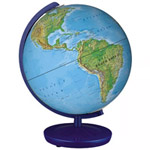Global Integrative Studies, School of
Date of this Version
4-17-2023
Document Type
Article
Citation
https://doi.org/10.1177/09596836231176
Abstract
This article explores the landscape dynamics at the island of Barbuda in the context of changing climate to understand (1) the environmental setting of indigenous settlements; (2) the impacts of current coastal processes; and (3) the potential threats moving forward toward increasing pressure of climate change. Focusing on the site of Seaview, on the east coast of Barbuda, we use geoarchaeological methods to reconstruct the ancient geomorphological setting, investigate changes post-abandonment, and identify the hazards faced under future sea-level projections. Our study shows that (1) sea level stabilization after the Mid-Holocene allowed the formation of coral reefs, seagrass beds and other benthic ecosystems that allowed for biogenic sediment accumulation and growth of sand dune retention ridges. (2) These environmental characteristics, including rich marine food sources, supported the establishment and flourishing of Seaview starting ca. 160 BC. (3) Occupation ended at some point between AD960 and 1000. This change coincided with a period of increased storminess, higher SSTs, and possible coral reef mortality that affected both food availability and sediment supply. (4) Lack of sediments triggered progressive sand dune erosion that continues today and has left the sand dune ridge past the tipping point of erosion. (5) Looking into a future of rapidly changing climate, sea level rise poses a severe and devastating threat to the land- and seascapes of Barbuda. With the lowland coastal plain at or only slightly above current sea level, a rate of SLR comparable to Mid-Holocene rates, and rapid loss of sand dune ridges and coral reefs as natural barriers, it is just a matter of time before the lowlands become transformed beyond recognition. The results of this analysis can be used to improve long-term management of the heritage resources of Barbudans and shed light on parallel challenges experienced on other tropical coastal locations.


Comments
Used by permission.